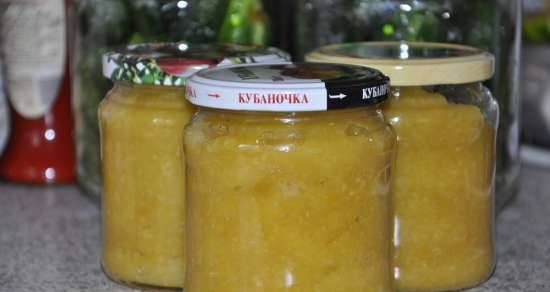I would like to develop the topic of zoogles (Indian sea rice, Tibetan kefir mushroom and kombucha). I was joking here / joking, I didn't joke much. Therefore, I decided to open these Temki. This is the first.
These introductions on sea rice, I rolled from the site (post from Marianne) and edited a little myself.
Indian sea rice
Bioculture of sea (live) rice has its historical roots in the times of the most ancient civilizations in the world. The unique healing properties of sea rice infusion (it is able to cure more than 100 diseases) were known in the earliest communities of people in China, India and a number of other countries.
However, sea rice itself was not originally created by humans. It is obvious that it has an exclusively natural, natural origin. It is a product of the development of microorganisms beneficial to humans, including acetic acid bacteria, which are present in the air.
Thus, it can be argued that air, this universal source of all life on Earth, is at the same time the substance from which sea rice came to us.
This statement can be easily proved: it is enough to keep sea rice for several days in an airless space - and it will wither and die.
People who have faith in God or in any Divine Principle, of course, have the right to assert that sea rice comes from God, and air is only the environment in which the life of this amazing bioculture is only possible (sea rice cannot live without air and its derived substance - water).
It is worth noting, nevertheless, the important role of people in the fact that the culture of sea rice has survived to this day. Having realized the great healing benefits of sea rice, people have been cultivating and carefully preserving this bioculture for many centuries.
Moreover, in different countries this "living medicine" is known under different names. For example, in Mexico, an infusion of sea rice is known as chibi. In ancient Rome, sea rice infusion was called posca.
In Russia, this bioculture has historically been given the name "sea rice" (apparently, the definition of "sea rice" came from the word "overseas", that is, brought from another country, from overseas: how can you not recall the expedition of the Russian traveler Afanasy Nikitin "over three seas", to India). This bioculture began to be called "live rice", apparently, due to the fact that when observing individuals of this bioculture in water, the respiration process of these microorganisms is very clearly visible, that is, the most important process that distinguishes the entire living world from non-living.
The name "rice" was assigned to this bioculture, apparently, for the reason that people had certain associations: in its shape, sea rice is distantly, but still resembles ordinary rice that is used for food; but the association of sea rice with ordinary food, rice, as the most important food product and, in a sense, a source of life and healing remedy of the peoples of the East, primarily China and India, is also important.
In later times, as this bioculture spread throughout Russia and some of its neighbors, including European, countries, to emphasize the originality of the origin of sea rice and, consequently, on the uniqueness of the healing properties of its infusion to the name "sea (living) rice "began to add geographical definitions" Chinese "," Indian ", etc.
To be more precise in geographical terms, then, according to many people cultivating sea rice, the geographical homeland of this bioculture is Tibet, although we will hardly ever know how things were in reality.
Sea rice relieves fatigue; restores metabolism; rejuvenates the cells of the body; improves well-being; increases efficiency; reduces weight; defeats disease-causing microbes; replaces antibiotics for diseases of the upper respiratory tract; lowers blood sugar levels; inhibits the development of cancer cells; cleans the mucous membrane of the gastrointestinal tract; removes plaque in case of purulent skin diseases; lowers blood pressure; cleans blood vessels; relieves nervous headaches; normalizes the acidity of the stomach; restores and strengthens the nervous system; dissolves salts in the joints; dissolves "sand" and "stones" in the gallbladder and kidneys; has an analgesic effect; has a beneficial effect on radiculitis; helps with insomnia, restoring normal quality sleep; restores and strengthens "masculine strength" (potency, 0); has a diuretic effect; eliminates a runny nose; relieves weakness in the legs.
A more complete description of the properties of sea rice infusion and a large number of recipes for its use for the treatment of widespread diseases, as well as for its use for cosmetic or medical-cosmetic purposes, can be found in the book by Irina Filippova "Mushrooms that heal ..." (see. section "Literature").
Please note: an infusion of sea rice cooked on dry sour apples is much less healthful than an infusion cooked on dried apricots, raisins or figs. If you want to achieve the maximum restorative and health-improving effect from the infusion of sea rice, combine the course of taking it with the course of taking any vitamin preparation of your choice.
THE SECRET OF THE EFFECTIVENESS OF SEA RICE IS ITS CHEMICAL COMPOSITION
The composition of the sea rice infusion contains the following elements:
(1) several types of yeast-like fungi and microorganisms (not to be confused with nutritional yeast !!! Modern research has found that nutritional yeast added to bakery and confectionery products promotes the development of cancer cells and suppresses healthy cells in the body, 0);
(2) several types of acetic acid bacteria;
(3) organic acids, including: phosphoric acid, pyruvic acid, uronic acid, glucuronic acid, p-coumaric acid, chlorogenic acid, acetic acid, oxalic acid, citric acid, lactic acid, kojic acid, folic acid;
(4) alcohol;
(5) vitamins C and D;
(6) tannins;
(7) polysaccharides of the cellulose type;
(aldehydes;
(9) choline-like fatty substances;
(10) fatty and resinous substances;
(11) alkaloids;
(12) glucosides;
(13) enzymes lipase, amylase, protease, levansacharase;
(14) enzymes that actively break down uric acid salts, as well as salts of other harmful acids that are deposited in the joints;
(15) coenzyme Q, or yubikinol-10, or vitamin Q (coenzyme Q10,0);
(16) some other elements.
Comments on the chemical composition of sea rice infusion:
Folic acid is essential in slowing the aging of the human body and protecting it from cancer; necessary for blood renewal and antibodies production; especially important during pregnancy.
Glucuronic acid is of great importance in the restoration of the tissues of the joints and spine affected by the disease.
P-coumaric and chlorogenic acids are recognized as the most active antioxidants that block free radicals. In very small quantities, these acids are present in fruits. In the infusion of sea rice, they are present not only in large quantities, but also in a bound state, and for this reason they are better absorbed by the human body.
The enzyme lipase (an enzyme that destroys harmful omega-6 fats) breaks down and removes fats from the body, including the most harmful and dangerous fats - polyunsaturated fats - which, in the process of oxidation inside the body, become a powerful source of free radicals (the most dangerous are hydrated or partially hydrated - omega-6 fats are found in margarine).
The enzyme amylase breaks down starch and glucose-containing substances, due to which the infusion of sea rice is also indicated in the treatment of diabetes mellitus.
The protease enzyme dissolves blood clots, breaks down proteins.
Coenzyme Q, or yubikinol-10, or vitamin Q, has been named by scientists as one of the most effective new (recently discovered) antioxidants, which can prevent the onset of old age indefinitely, as well as cure many diseases.
Yeast-like fungi and microorganisms (not to be confused with yeast!) Are responsible for a healthy gut microflora. Once again, it's worth pointing out that yeast-like microorganisms should never be confused with nutritional yeast (food yeast). Modern research has found that nutritional (culinary) yeast added to bakery and confectionery products promotes the development of cancer cells and suppresses healthy cells in the body. Yeast-like fungi (microorganisms) contained in sea rice infusion are the exact opposite of food (culinary) yeast fungi.
Alcohol is contained in the infusion of sea rice in very small quantities and prevents the development of cardiovascular diseases.








